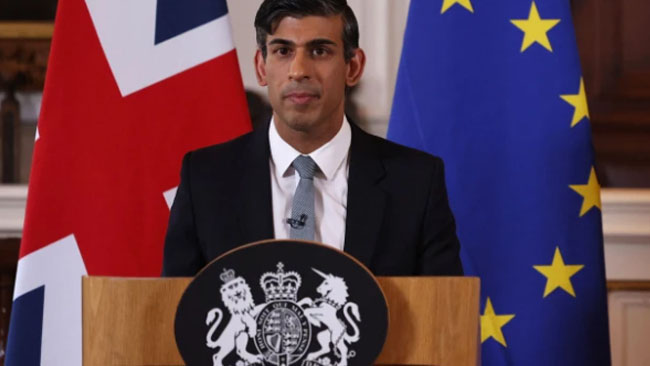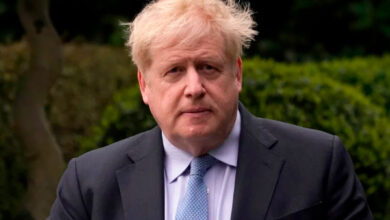Analysts feel it is still too early to predict how much real gain the UK’s largest post-Brexit trade deals would provide, while Britain may still profit geopolitically.
Rishi Sunak revealed this morning that the United Kingdom has inked its largest trade pact since Brexit, which the government believes will open up new prospects with Indo-Pacific countries.
Britain will join the Comprehensive and Progressive Agreement for Trans-Pacific Partnership (CPTPP), an 11-member Asia-Pacific trade bloc, as the first non-founder nation.
The Prime Minister stated that the new deal will boost the British economy by £1.8 billion per year by the end of the decade, yet even according to the Government’s own figures, this will equal to just 0.08 percent of UK GDP.
It has put new light on the free trade agreements reached by the government since Brexit, and how the advantages from those accords compare to the prospective benefits of remaining in the EU.
How many trade agreements has the UK signed?
After effectively exiting the EU on January 31, 2020, the UK has inked trade treaties and agreements in principle with 71 nations.
Nevertheless, the majority of those were essentially “rollover” agreements, which meant they reproduced the terms of existing treaties the UK had while it was an EU member rather than forging new trading arrangements.
Just three of the UK’s 71 trade agreements – those inked with Japan, Australia, and New Zealand – can claim to provide new opportunities not available when the UK was a member of the EU, and only two of them feature major modifications.
The UK’s trade pact with Japan, reached in October 2020, was the first to deviate from the current EU trade deal – although it only has minor modifications from the previous incarnation, according to analysts.
“To be honest, there’s a little chapter in there on digital commerce that is somewhat different, but in fact, it makes absolutely no difference to the UK’s relationship with Japan overall,” said Stephen Hunsaker, trade specialist at research organisation Britain in a Changing Europe.
“The real two major ones are Australia and New Zealand.” With the UK’s entry into the CPTPP, these two arrangements were created from scratch and are perhaps the largest we’ve seen to date.”
How are things going?
The UK’s trade agreements with Australia and New Zealand, signed in December 2021 and February 2022, respectively, were lauded by the government as “world-class accords” that would unleash more than £10.4 billion in new trade.
If implemented, the agreements would provide zero tariffs on all UK exports to Australia and New Zealand, as well as on 99.5 percent of Australian and New Zealand exports to the UK.
The agreements also abolished certain visa restrictions, enabling young people to work and travel in Australia for up to three years, with qualified professionals able to do the same in New Zealand.
However, opponents have regarded both pacts as mostly lacklustre, with former Prime Minister Liz Truss strongly criticised by prominent Conservative MPs for failing to deliver on the promised benefits of Brexit.
Former Environment Secretary George Eustice said in a Commons debate in November that the treaty signed with Australia was “not actually a very good deal for the UK” because of the impact it would have on UK farmers.
His remarks followed criticism from major players in the British farming sector, who warned that the agreement might flood UK stores with cheaper and lower-quality meats, putting further strain on farmers already dealing with inflation and labour shortages.
The Australian agreement was also criticised for being “too nice” to the nation, with tariffs on products entering and leaving Australia being so low that abolishing them totally was considered as a very minor change, according to analysts.
Former Australian trade negotiator Dmitry Grozoubinski compared it to a “landlocked Switzerland agreeing to remove its fleet.”
“Australia already had most of its tariffs reduced for the UK, so there wasn’t much that they had to sacrifice,” Mr Hunsaker said. It was generally seen as a good bargain for Australia.”
In any case, it is too early to judge how much practical value the Australia and New Zealand trade treaties will bring to the UK, since both are still being debated in the House of Lords.
The Government estimates that the trade agreement with Australia will enhance UK GDP by between £200 and £500 million per year, or 0.01 to 0.02 percent of GDP, with a similar number projected for New Zealand.
It implies that the UK’s admission to the CPTPP, which is predicted to boost GDP by 0.08 percent per year in ten years, is a far greater deal.
But, opponents have pointed out that all three arrangements would do nothing to counteract the predicted 4% drop in the UK’s potential economic growth caused by Brexit, according to estimates from the Office for Budget Responsibility (OBR), which gives predictions to the Government.
Mr Hunsaker of UK in a Changing Europe warned me that it might be at least a decade before the UK feels the consequences of both the Australia and New Zealand pacts.
“What people don’t realise about trade treaties is how long they take and how gradual the changes are.” “They’re relatively little in terms of GDP anyhow,” he told i.
“What was more essential about these two treaties was that they helped build up the UK’s accession to the CPTPP.” Attempts were made to complete them fast and maybe concede more than was first intended. Yet, they were viewed as important agreements to be reached in order for the UK to have greater power in entering the Trans-Pacific Partnership.”
What additional trade agreements are on the horizon?
Analysts think the UK’s new trade agreement with the CPTPP will improve Britain’s geopolitical position and pave the path for future trade accords.
According to Minako Morita-Jaeger, senior research Fellow in international trade at the University of Sussex, while the new treaty will provide modest economic benefit, it should be viewed as a “geopolitical strategic advantage” for the UK.
The main economic gain from this is dependent on the future growth of the CPTPP,” she explained. “The UK already has free trade agreements with nine of the eleven member states, but there’s a chance that additional important countries may join, and that’s where the real value resides.”
The UK already has trade agreements with Australia, Canada, Japan, Mexico, New Zealand, Singapore, Chile, Peru, and Vietnam, which make up the great bulk of the CPTPP’s 11 member countries.
Yet, when other economies join the EU, the UK may gain access to new markets. Costa Rica, Uruguay, and Ecuador have filed to join the CPTPP, while Thailand and South Korea have indicated interest.
China has also applied to join the CPTPP, while numerous member countries have promised to block it. In a surprising statement on Friday, former Prime Minister Ms Truss urged the “British government now or in the future to resist any such idea.”
Yet, the two most important prospective post-Brexit trade accords for the UK are outside of the CPTPP and remain unsigned: those with India and the US.
While President Joe Biden has ruled out any future free trade agreement between the UK and the US, the Prime Minister has set a prospective trade pact with India as a priority political aim for newly-elected Commerce and Trade Secretary Kemi Badenoch.
While Mr Sunak’s desire to clinch a deal with India by Diwali last October fell through at the last minute, ministers are hoping that they can sign an agreement with the nation that could be marketed as a huge Brexit win.
According to Mr Hunsaker, an agreement with India would fulfil the “great promises of Brexit” that the UK’s previous free trade agreements have failed to achieve.
“I believe it has the potential to be even larger than CPTPP.” That is based on the strength of the UK-India relationship and the size of India as a trading partner. It recently eclipsed the United Kingdom as the world’s largest economy – I mean, it’s massive,” he told i.
A prospective agreement with India will certainly improve Indian exports of textiles, foods, drinks, pharmaceuticals, and IT services, while the UK’s automotive, agri-food, equipment, and pharmaceutical industries would also profit.
Yet probably the most significant advantage that a trade agreement with a country as large as India may provide is a strengthening of Britain’s standing on the global stage and increased security in the face of rising global tensions.
“We are not just economically but also politically connected with nations like the United States, Australia, and New Zealand,” Mr Hunsaker added. “But India?” Not so much. With everything going on with Russia, an agreement with a country like India would be a big economic and political gain.”






